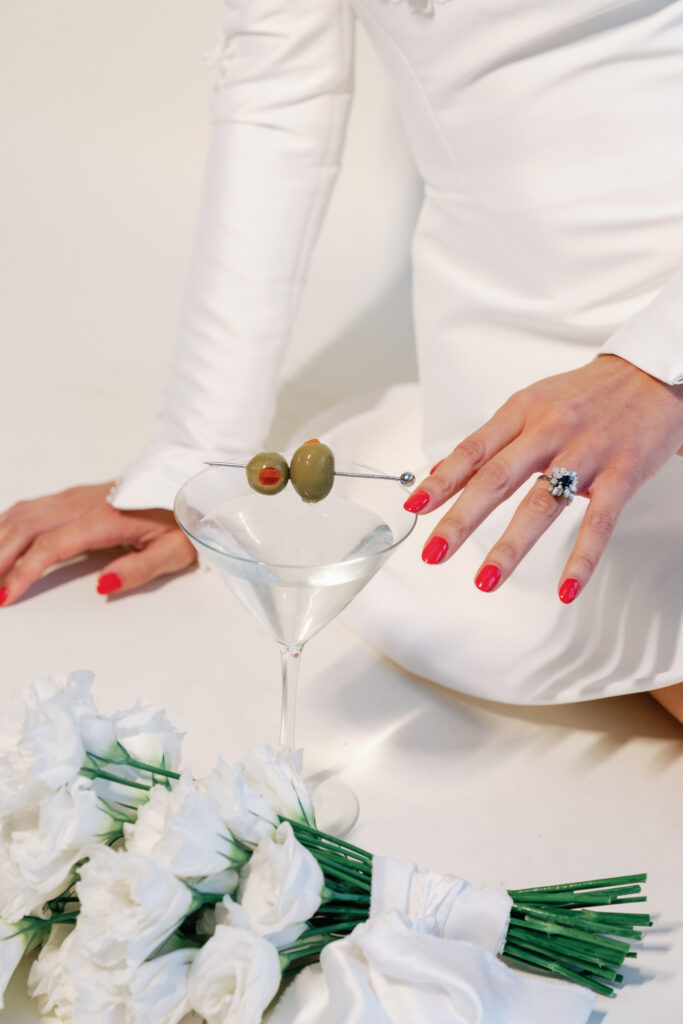
Integrate artificial light into your work flow as a wedding photographer.
Ok, that title was a bit misleading, but there’s some truth there. As a luxury wedding photographer, you know that the quality of your photos is essential to the success of your business. But what you may not realize is that understanding how to use artificial light is just as important as knowing how to use natural light. Wedding photography has experienced it’s share of trends. Natural light photography hit peak “trendy” pre-pandemic, but I tend to recognize that trends swing drastically like a pendulum–lighting in wedding photography is no exception. Whereas light and airy photos were once the goal, clients are now looking for dramatic light like direct flash.
Artificial light can be used to create a variety of effects, from dramatic to subtle. It can be used to fill in shadows, add highlights, or even change the mood of a photograph altogether. By understanding how to use artificial light, you can create photos that set you apart from the pack.
Here are a few tips for using artificial light:
- Choose the right light source. There are many different types of artificial light sources, each with its own unique characteristics. Some light sources are soft and flattering, while others are harsh and dramatic. Choose the light source that will create the effect you want. For example, placing a light at an above angle, diagonally in front of your subject can help create dynamic contouring, while placing a light directly behind your subject can help create separation from darkness at night (this is also called key lighting).
- Position the light. The position of the light source will affect the way your photos look. I know this sounds backwards, but if you want to create a softer effect, place the light source closer to the subject. If you want to create a harsher effect, place the light source further away.
- Adjust the intensity of the light. The intensity of the light will also affect the way your photos look. When shooting the dancing portion of a wedding reception, adjust your ISO, aperture, and shutter speed in camera to reach your desired look. You can also adjust the settings on your flash (power and zoom) to influence the final product.
- Use diffusers. Diffusers are tools that can help to soften and spread light. They can be used to create a more flattering effect in your photos. My go to diffuser is the MagSphere 2. Make sure you get a MagGrip to go with it. If you don’t have a diffuser, bounce your flash on a wall, tent, or ceiling (whatever you have access to). The larger the surface area, the greater the spread of light will be.
- Experiment. The best way to learn how to use artificial light is to experiment. Try different light sources, positions, and intensities to see what works best for you. The more you experiment, the better you’ll become at using artificial light to create beautiful and professional photos.
I documented some experimentation of my own during a recent mentor session. While these references can be helpful, I recommend practicing on your own so that you can get a feel for your settings and how they will edit in post.
- Bounced light: the flash is attached to the camera and pointed towards a white wall. The light bounces back from the wall and diffuses to create an even, lit look.
- Direct flash: the flash is attached to the camera and pointed directly at the objects. You’ll likely need to lower the power to avoid blowing out your highlights.
- High ISO: no flash. This look is great for capturing the ambience. Watch out for grain as you raise your ISO, and use a tripod as needed when lowering your shutter speed.
- Constant light: one of my favorite looks. You can attach an on camera video light, have an assistant hold a constant light, or post one up using a light stand. I love using constant light for moments like cake cuttings or sparkler exits because they won’t drown out other light sources, and you have control of what you want lit while still maintaining the surroundings in the moment.




Artificial light can be a powerful tool for photography. By understanding how to use it, you can create photos that truly capture the vibrancy of a moment–how it actually looked to be there. Rather than manipulating the style of a photograph, you can document the moment as it was intended.